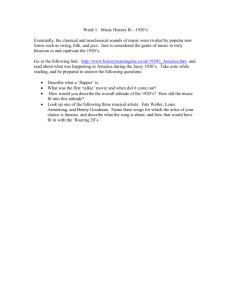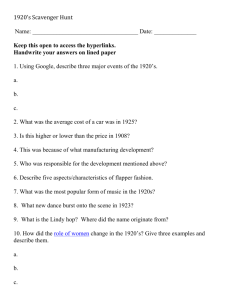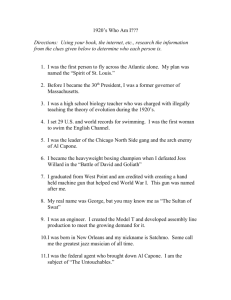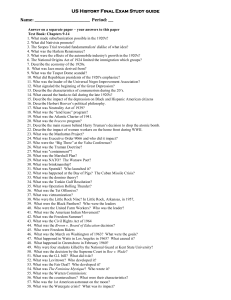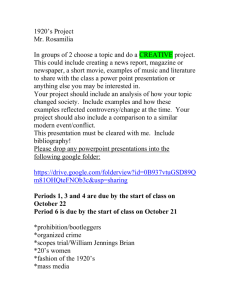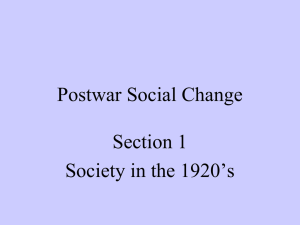Pre WWII – Years of Crisis
advertisement
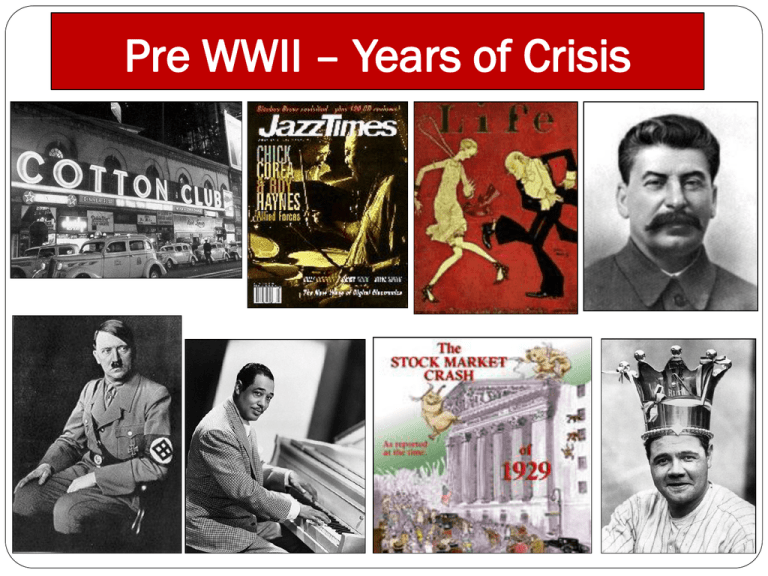
Pre WWII – Years of Crisis 15.1 - Postwar Uncertainty Why it Matters Now: Postwar trends in physics, psychiatry, art, literature, communication, music, and transportation still affect our lives. Main Idea: The postwar period was one of loss and uncertainty but also one of invention, creativity, and new ideas. Albert Einstein • German-born physicist • Offered new ideas on space, time, energy & matter. • 1905: “Theory of Relativity” • Uncertainty & relativity replaced Newton’s belief of a world operating according to absolute laws of motion & gravity Sigmund Freud • Austrian physician • Treated patients with psychological problems • Constructed a theory about the human mind Much of human behavior is irrational, or beyond reason Friedrich Nietzsche • German philosopher • Influenced Existentialists There is no universal meaning to life Each person gives own meaning to life through choices & actions • 1920’s & 1930’s: ideas impacted politics in Italy & Germany Western society put too much stress on reason, democracy, & progress Stifled emotion & instinct Individuality & creativity suffered Urged a return to values of pride, assertiveness, & strength Art • Rebelled against realistic styles of painting • Depicted emotion & imagination • Expressionism Bold colors Exaggerated shapes • Cubism Georges Braque Pablo Picasso Transformed natural shapes into geometric forms Objects broken down into parts with sharp angles Surrealism • • • • Inspired by Freud Surreal = “beyond or above reality” Sought to link the world of dreams with real life Dream-like quality & depicted objects in unrealistic ways. Architecture • Old: highly ornamented structures • New: functionalism Design reflected the building’s function or use Frank Lloyd Wright Clean, low lines & open interiors that blended with the surrounding landscape Music • Jazz • Developed by African American musicians in New Orleans, Memphis, & Chicago • Lively loose beat • Seemed to capture the new freedom of the age Women • After WWI: New roles Education, medicine, journalism Women gain right to vote U.S., Britain, Germany, Sweden, & Austria • Flapper A young woman who rebelled against convention Wore skirts above the knee Cut their hair in a "bob" Central to parties of the vibrant nightlife of the 1920‘s "Like jazz music, the gangster, & the speakeasy, the rebellious & funloving flapper was a product of 1920’s urban America." The Automobile • Wartime innovations & improvements Electric starters, air filled tires More powerful engines Sleek & polished • Prices dropped & middle class could afford cars Increased auto use by the average family Could move to suburbs & drive to work More people traveled Technology Changes Life Airplane • • • • • 1918: Planes could fly hundreds of miles 1919: British pilots made the first successful flight across the Atlantic 1920’s: Major passenger airlines were established 1927: American pilot Charles Lindbergh made a 33 hour solo flight from N.Y. to Paris 1932: American Amelia Earhart first woman to fly solo across the Atlantic Radio • 1895: Guglielmo Marconi experiments with first successful radio • Advantages of wireless communication in battle made radio research a high priority Armies developed a wide range of radio equipment • 1920: Pittsburgh, Pennsylvania, 1st radio station Radio mania swept the U.S. Movies • 1920’s: Motion pictures a major industry • Europe: serious art form • Hollywood: entertainment Charlie Chaplin: king of the silent screen Late 1920’s: addition of sound 1930’s: 90 million attended movies each week
